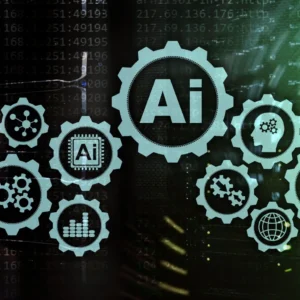
Navigating Challenges
Successful Implementations of AI Tools for Intelligent Process Automation (IPA)
Embarking on the journey to integrate AI tools for Intelligent Process Automation (IPA) is a transformative endeavour, promising enhanced efficiency and innovation.
However, amid the promise of automation lies a landscape fraught with complexities and challenges. This article explores successful IPA implementations, discusses organizational challenges, and provides strategic solutions.
Each facet demands careful navigation, from data quality and integration hurdles to ethical considerations and scaling challenges. Both business and technical solution providers stand to gain valuable insights from understanding these Challenges and their corresponding solutions, forming a foundational understanding for orchestrating successful IPA implementations.
As we explore the intricacies, it becomes evident that the path to realizing the full potential of AI tools in IPA necessitates a holistic and strategic approach, blending technological advancements with astute human-centric considerations.
Table of Contents
Data Quality and Availability
In the journey to deploy AI tools for Intelligent Process Automation (IPA), a critical hurdle emerges – the quality and availability of data. The success of AI models hinges on the richness and accuracy of the data they process.
Challenge:
There needs to be more accurate or good-quality data to ensure the effectiveness of AI models, leading to accurate outcomes and hampered automation.
Workaround:
Businesses should invest in data cleansing and enrichment procedures to address this challenge. These measures enhance the overall quality of the data at the disposal of AI systems. Additionally, implementing robust data governance practices is paramount.
Data governance ensures accuracy, completeness, and timeliness. Clear guidelines and standards for managing data can optimize AI performance. This involves regular audits, data validation procedures, and maintaining a vigilant eye on data sources.
The adage “garbage in, garbage out” resonates profoundly in AI. A strategic commitment to refining data quality and ensuring its ready availability lays a solid foundation for the seamless integration and performance of AI tools, propelling businesses toward successful IPA implementation.
Change Management
Navigating the integration of AI tools for Intelligent Process Automation (IPA) involves more than technological considerations; it’s about managing the human side of change.
Challenge:
Resistance from both employees and management can impede the smooth adoption of AI-driven changes within an organization.
Workaround:
Comprehensive change management strategies are indispensable to overcoming this challenge. Begin by engaging stakeholders early in the process, fostering a sense of ownership and inclusion. Provide thorough training to equip employees with the necessary skills and knowledge.
Communication plays a pivotal role—clearly articulating the benefits of AI integration and emphasizing how it aligns with broader organizational goals. Address concerns transparently, demonstrating a commitment to a smooth transition.
Highlighting quick wins is an effective strategy to build confidence and garner support. Identify and implement small-scale AI initiatives that yield tangible and immediate benefits. These victories serve as proof points, showcasing the positive impact of AI tools.
Change management is a delicate orchestration of communication, training, and engagement. Successful implementation of AI tools relies on technological prowess and a harmonious collaboration between technology and the workforce, ensuring a culture receptive to change.
Integration with Existing Systems
A pivotal challenge in implementing AI tools for Intelligent Process Automation (IPA) is the seamless integration with existing systems.
Challenge:
The complexity arises from the difficulty of integrating AI tools with legacy systems, potentially causing disruptions and inefficiencies.
Workaround:
To overcome this hurdle, prioritize interoperability. Select AI tools that seamlessly integrate existing systems through well-defined Application Programming Interfaces (APIs). APIs act as bridges, enabling smooth communication between different software systems.
Consider adopting a gradual implementation or phased approach. This allows for a step-by-step integration, minimizing disruptions to ongoing operations. Organizations can systematically address challenges and ensure a smoother transition by breaking down the integration into manageable phases.
Strategic planning is critical; organizations must evaluate the compatibility of AI tools with legacy systems during the selection process. This proactive approach ensures a harmonious integration of IPA while preserving existing operations.
Lack of Skilled Workforce
A significant roadblock in implementing AI tools for Intelligent Process Automation (IPA) is the need for more skilled professionals.
Challenge:
More individuals with the skills to manage and maintain AI systems are needed.
Workaround:
Invest in training programs to equip existing employees with AI and automation skills. Alternatively, consider hiring experts with proven AI capabilities. Leverage external consulting services if the demand for expertise surpasses internal capabilities. Collaborating with experienced professionals ensures a smoother implementation process.
Encourage an environment of ongoing education and growth throughout the company. The AI landscape evolves rapidly, and a workforce committed to staying abreast of advancements is essential for sustained success. Encourage employees to engage in ongoing training, certifications, and knowledge-sharing initiatives.
To address the shortage of skilled workforce, an organization can improve their ability to utilize AI tools for IPA through internal development and external support. It is an investment in technology and human capital, paving the way for successful and sustainable implementation.
Ethical and Legal Concerns
Implementing AI tools for Intelligent Process Automation (IPA) introduces ethical and legal challenges that demand careful consideration.
Challenge:
It is essential to recognize that the increasing prevalence of artificial intelligence (AI) systems in our everyday lives poses ethical and legal challenges that must be handled cautiously. One of the main concerns is the possibility of biases being built into the AI system, which may perpetuate and even amplify existing societal inequalities.
AI-powered systems may collect and store large amounts of personal data, which raises privacy concerns. Developers must take these issues seriously and implement appropriate safeguards to ensure their AI systems are helpful, fair, and safe for all users.
Workaround:
Organizations must implement robust ethical guidelines and compliance frameworks to navigate these complexities. Clearly defined ethical standards serve as a compass, guiding AI implementations towards fairness, transparency, and responsible use.
Regular audits of AI models are essential to identify and rectify biases promptly. This ongoing scrutiny ensures the system remains impartial and aligned with ethical standards.
Involving legal experts in both the design and deployment stages is paramount. Legal professionals bring a nuanced understanding of regulatory requirements, helping organizations navigate complex legal landscapes. Their insights contribute to developing AI systems that adhere to existing laws and regulations.
By integrating these measures into AI implementation, organizations mitigate ethical and legal risks and foster trust among users and stakeholders. When deploying IPA ethically and legally, it is crucial to balance innovation and compliance.
Measuring ROI
Quantifying the return on investment (ROI) for Intelligent Process Automation (IPA) initiatives presents a distinctive challenge.
Challenge:
Measuring the tangible benefits of IPA projects proves challenging due to the intricacies of their impact on various business aspects.
Workaround:
Establishing clear Key Performance Indicators (KPIs) before implementation is crucial to address this. Clearly defined KPIs serve as benchmarks, facilitating objective evaluation. Regularly measure and analyze the performance against these pre-established KPIs. This ongoing assessment ensures alignment with organizational goals and provides insights into the effectiveness of the IPA implementation.
Consider initiating pilot projects before full-scale implementation. Pilot projects offer a practical testing ground, allowing organizations to gauge the potential ROI in a controlled environment. The lessons learned from these smaller-scale endeavours can inform decisions for broader deployment.
Measuring ROI in the realm of IPA demands a strategic approach. Organizations can navigate the complexities of ROI measurement by setting clear expectations, continuously evaluating performance, and utilizing pilot projects to ensure a more informed decision-making process.
Security Risks
Security vulnerabilities pose a critical challenge in the implementation journey of AI tools for Intelligent Process Automation (IPA).
Challenge:
AI systems, while transformative, may expose organizations to security threats, demanding vigilant safeguarding measures.
Workaround:
Prioritize cybersecurity to fortify the system. Implement robust encryption protocols to shield sensitive data from unauthorized access. Leverage stringent access controls, ensuring only authorized personnel can interact with the AI systems. Regular security audits are imperative to identify and rectify potential vulnerabilities promptly.
A proactive security approach and continuous monitoring strengthen system resilience against evolving cyber threats.
In the landscape of AI for IPA, safeguarding against security risks is non-negotiable. Organizations can confidently leverage AI by adopting security measures to protect sensitive information and operations.
Scalability
A critical challenge in deploying AI tools for Intelligent Process Automation (IPA) is the difficulty scaling initiatives.
Challenge:
Scaling AI initiatives to accommodate business growth poses challenges, demanding careful planning and execution.
Workaround:
Opt for scalable AI solutions and architectures. Select tools designed to seamlessly adapt to increased workloads without compromising performance. Prioritize strategic planning for future expansion. Ensure the chosen AI tools align with long-term business goals and can effortlessly scale alongside organizational growth.
Regularly reassess infrastructure needs. As workloads evolve, be prepared to upgrade infrastructure components, ensuring continued efficiency and optimal performance.
Successfully navigating the scaling challenges is pivotal for maximizing the benefits of AI tools in IPA implementations. Organizations can build a foundation that flexibly accommodates the demands of an expanding operational landscape by adopting scalable solutions and proactively planning for growth.
Cost Overruns
One significant hurdle in implementing AI tools for Intelligent Process Automation (IPA) is the risk of unexpected expenses.
Challenge:
During the implementation phase, unforeseen costs may arise, potentially impacting the project’s financial viability.
Workaround:
Develop a comprehensive budget, incorporating contingency plans to address unforeseen challenges. Prioritize features based on their business impact. This ensures that essential functionalities are addressed first, minimizing the risk of budget overruns.
Maintain vigilant expense monitoring throughout the implementation process. Be agile in adjusting the budget and responding promptly to changing circumstances or emerging requirements.
Cost management is integral to the success of AI tools in IPA. A disciplined approach to budgeting, coupled with flexibility, enables organizations to navigate potential financial challenges and ensures the smooth progression of the implementation journey.
User Acceptance
A critical challenge in implementing AI tools for Intelligent Process Automation (IPA) is ensuring user acceptance.
Challenge:
Users may find adapting to new AI-driven processes challenging, leading to resistance and potential disruptions.
Workaround:
It is essential to involve users proactively to overcome this obstacle. Include end-users in the design and testing phases, ensuring their insights shape the AI implementation. Provide comprehensive training and support during the transition period. Empowering users with skills and knowledge fosters confidence in navigating AI tools.
Gather user feedback continuously. Actively seek input on user experiences and challenges. This iterative approach allows organizations to make adjustments based on real-world usage, enhancing overall acceptance.
Create a culture of responsiveness to user needs. Implement continuous improvement processes based on user feedback, demonstrating a commitment to refining AI tools to better align with user expectations.
Successful user acceptance is not just about technology but also about creating a user-centric ecosystem. Organizations can bridge the gap between new AI-driven processes and user acceptance by involving users from the outset, providing ongoing support, and refining based on feedback. This collaborative approach ensures that AI tools become valuable assets embraced by the user community, contributing to the overall success of IPA implementations.

Arindam Roy
An Automation Consultant with 25+ years of IT Experience
Related Articles
- Training and Upskilling for AI-Enabled Workforce for IPA
- Challenges in Successful Implementations of AI Tools for IPA
- Addressing Security Concerns in AI-Driven Process Automation
- Integrating AI Tools with Existing Systems for IPA
- Selecting the Right AI Tools for Your Business
- Key Features of AI Tools for IPA: Transforming Processes
- AI Tools for IPA: Revolutionizing Business Efficiency
- Benefits of Implementing AI Tools for IPA
- Understanding the Business Context of IPA
- Evolution of AI in IPA: From Rules to Industry 4.0
Conclusion
In navigating the landscape of implementing AI tools for Intelligent Process Automation (IPA), we’ve delved into critical Challenges and strategic workarounds. Recognizing the multifaceted challenges, organizations must prioritize meticulous planning and thoughtful solutions to ensure successful IPA implementations.
From data quality and security risks to user acceptance and cost overruns, the complexities demand a comprehensive approach. Successful implementations require a delicate balance between technological prowess and human-centric considerations.
Moreover, addressing the shortage of skilled professionals, integrating with existing systems, and measuring ROI necessitate strategic foresight and adaptability. These challenges underscore the dynamic nature of AI tools in IPA, emphasizing the importance of staying proactive and responsive to the evolving landscape.
The lessons learned from practical implementations stress the significance of user involvement, continuous learning, and ethical considerations. In conclusion, organizations embarking on the IPA journey must embrace a holistic perspective, recognizing that the true success of these implementations lies not only in the capabilities of the technology but in the harmonious integration with human processes and values. Businesses can fully unlock AI tools for efficiency, innovation, and success in Intelligent Process Automation.






















